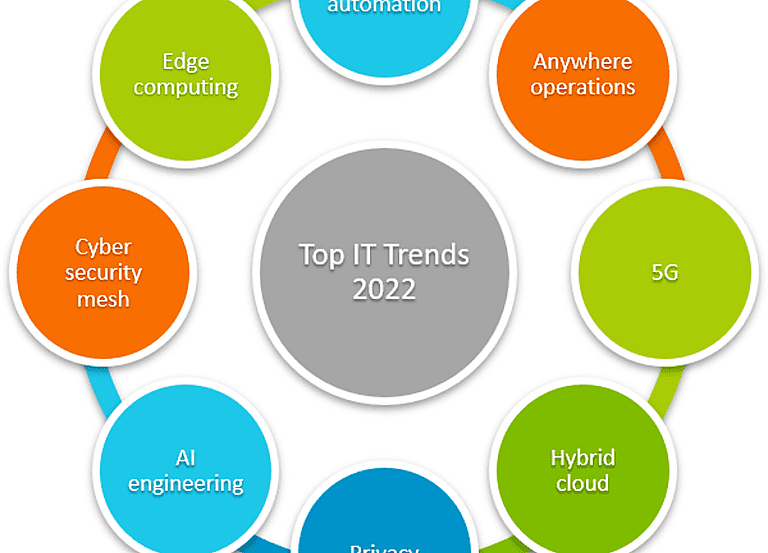- Hyper automation is the process of combining technologies to allow the processing of information in more effective ways. One example is automating repetitive manual processes using robotics. The technology has developed further to address process-based automation, i.e. several tasks in a process. The future holds much promise as functional automation across multiple processes becomes a reality. The breadth of automation has expanded, opening many possibilities for operational efficiencies.
- Anywhere operations moved from convenience to necessity due to the strains the pandemic placed on the workplace. Now, employees can use desktop devices, tablets, mobile phones, or other devices to communicate and perform work in real time. It enables seamless collaboration via platforms of software and infrastructure ecosystems that provide a digital headquarters. It allows for work anywhere, anytime, giving the individual flexibility previously only a dream.
- 5G was introduced in 2019, its use becoming widespread by 2021. In 2022, both large corporations and small businesses have created innovative infrastructures and applications to enhance employee productivity and improve the customer experience. It provides reliable high-speed internet, which is particularly useful for smart applications.
- The development of Hybrid Clouds is the latest innovation to help address challenges to your business. Mixtures of private and public clouds can provide the optimal mix of data access and security. Companies with hybrid or multi-cloud software deployments will have a leg up on the competition and enhance corporate performance.
- The need for privacy-enhancing computation will continue to grow as there is an ever-greater need for means to protect data and maintain privacy. It is particularly critical for multi-party work in untrusted environments. This need will be consumer-driven as users demand protections for the massive amounts of data housed in apps and social media sites.
- Companies have been turning to Artificial Intelligence (AI) to manage, regulate and evaluate massive amounts of data. AI Engineering manages data to help companies bring projects to the market and improve scalability and performance. The bottom line is a healthier bottom line.
- A Cybersecurity mesh is a distributed architectural approach that provides flexibility, scalability, and reliability to the safety of your data. A cybersecurity mesh differs from traditional security by placing security perimeters around individuals rather than organizations. Companies will be better able to protect their data and information inside and outside their business.
- Edge computing is a distributed computing paradigm that brings computation and data storage closer to the data sources. It provides the advantage of improved response times and less bandwidth. It’s not limited to personal use; it will also enhance such corporate activities as fleet management, predictive maintenance, and voice assistance.
- All manner of Smart Devices are here to stay, with AI home robots, appliances, work devices, and wearables becoming more common in our homes and workplaces. Almost every job needs smart software applications to make work life more manageable. And new devices and applications appear on the market each year.
Technology is growing at an exponential pace. Soon, everything described above will be obsolete, replaced by innovations providing greater efficiencies.
Great Talent is never obsolete and always in demand. Connecting with Daley AA is connecting with talent.




